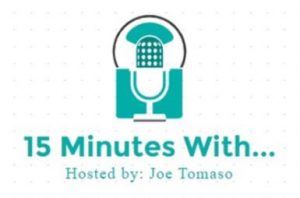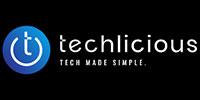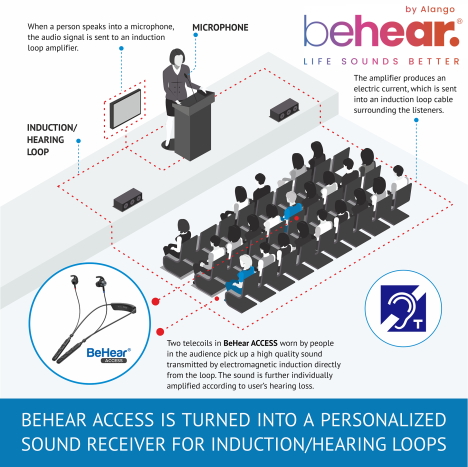Joe Tomaso Reviews BeHear Assistive Hearing Headset
“They are so much better than traditional hearing aids.”
♦ In this 4-minute audio review, True Crimes podcast host Joe Tomaso (who suffers from hearing loss himself) packs in a lot of information. He brings anecdotes from his professional and personal lives to illustrate how much he likes the BeHear assistive hearing headsets. For example:
“As I’m hosting and doing production work and even editing my podcast, I am using both the BeHear ACCESS and the BeHear NOW personalized assistive hearing products. I have had traditional hearing aids and they cost me thousands of dollars. I also have used similar products that not only cost me a lot more than my BeHear devices, but they were big and clunky and not as comfortable. Also, they didn’t give me the personal hearing experience that matches BeHear.”
“My wife likes this as I’m not blasting the volume on the TV anymore.” – Joe Tomaso, True Crimes Podcast Host
“My BeHear devices are stylish and they help me hear better whether it’s live conversations, hearing better in public places, live music, cell phone calls or just listening to TV.”
“I really can’t say enough for these devices. Recently I was also able to hear birds chirping near sunrise. I have not been able to hear that sound even with my hearing aids and it’s not just what you can hear that counts. It’s what you’re missing out as well. I highly recommend these devices.”
Listen to Joe’s 4-minute review by clicking the link below:
To get our stories sent directly to your inbox, register here.
How W&H Has Changed Elisabeth’s Life
BeHear ACCESS Customer Shares Her Experience

♦ “The first time I truly understood the ACCESS actually works as advertised was during breakfast in the noisiest restaurant in town with friends. Midway through our meal, I realized that I was hearing the conversation just fine, and I felt my tension fall away as I relaxed and just enjoyed being with my friends.” ♦
“I am an 83-year old woman who has never worn hearing aids. When I had my hearing tested, the audiologist recommended hearing aids that cost $6,000, plus the cost of an iPhone, plus tax—roughly $7,300. I thought that was obscene! I went immediately to the internet and searched for alternatives. That’s how I found Wear & Hear. I learned that they were releasing a follow-up to the BeHear NOW, and I wanted to be one of their first customers.

It took a few months to receive my device [until the official release -Ed.], but it was worth the wait. The BeHear ACCESS is brilliant! My main problem was that my ear canal is so small I couldn’t use any combinations of the ear buds and hooks. Fearing that I wouldn’t be able to use the device, I contacted Wear & Hear and they responded immediately. Their technician suggested using it without buds or hooks. For me, that worked perfectly! I have not been self conscious about wearing it. Even people who knew I was going to be receiving the device ask me what I’m listening to. I say, “You.”
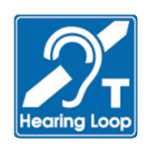
I discovered that the senior center where I attend an exercise class offers individual hearing loops, which enabled me to use Telecoil mode. I was surprised to be able to discern words in what had been mostly a wall of noise from the public address system.
The last time I attended a program at our local theatre, I heard about 20% of what the speaker said. I knew I couldn’t go back. After I received BeHear’s ACCESS, I contacted the theatre and was delighted to learn that they support Telecoil. I’ll be back!
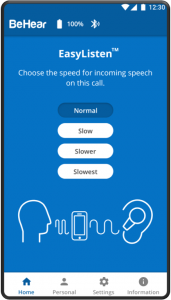
My favorite feature is the [EasyListen -Ed.] Slow, Slower, Slowest settings with phone calls—so handy when you’re trying to listen to a fast talker! Next is ListenThrough. I have several friends who wear top-of-the-line hearing aids (we’re talking $6,000-$8,000), and they have nothing that is comparable. Most of them ask if I mind having something around my neck, and I tell them I don’t; in fact, I don’t even notice it except when the cords catch on my clothing. In any case, it’s a small inconvenience when you consider the price difference! I always point out that any high tech device is going to be obsolete in 6-12 months, and I can afford to buy a new BeHear device every year for the rest of my life for half of what one pair of high end hearing aids would cost in the first year. And, because it is rechargeable, I won’t be bothered with those pesky little batteries that die at exactly the wrong time.

One of the things I appreciate about Alango is that they have democratized hearing help by making the device compatible with an old version of Android (4.4) at a very affordable price. Their mission is to provide hearing technology to as many people as possible; however, they are not motivated solely by money—there is an altruistic element to what they are doing. To understand what I mean, everybody should read The Future Is Now: “How we can create an affordable, self-administered solution to hearing loss” with Dr. Alexander Goldin. ”
Elisabeth Starnes
Dedicated Customer
To get our stories sent directly to your inbox, register here.
Stylish, Over-the-Counter (OTC) Hearing Devices
“These headphones have good ergonomics.”
♦ Stewart Wolpin, a writer for Techlicious “Tech Made Simple”, recently included the BeHear ACCESS in his lineup of four new “Over the Counter” (also known as OTC) hearing devices.
As per the article, “Alango’s Wear & Hear BeHear ACCESS operate as regular behind-the-neck Bluetooth headphones, letting you listen to music, take calls, and adjust the volume of ambient sound. They also have a couple of OTC hearing aid extras.
If you have trouble following fast talkers or people with accents on phone calls, an EasyListen mode elongates consonants to remarkably improve comprehension. – Stewart Wolpin, Techlicious
“The BeHear Access are T-coil compliant, which means you’ll receive broadcasts directly to the headphones in loop-enabled public venues like theaters and churches. (You can tell by the ‘T’ designation on your program.)”
“And the headphones have good ergonomics: The headphone controls are extra-large, uniquely-shaped buttons you can control by feel, and there is a drop-in magnetic charger, so you don’t have to fiddle with tiny jacks and plugs.”
To get our stories sent directly to your inbox, register here.
Tech Expert “Ask Dave Taylor” Reviews BeHear ACCESS
“Good as Audio Headphones but Pretty Darn Amazing with Assistive Hearing”
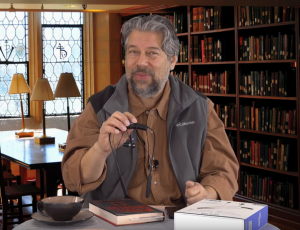
♦ Tech expert Dave Taylor of https://www.AskDaveTaylor.com/ tried out the BeHear Access and found them to be good as audio headphones but pretty darn amazing with assistive hearing. Among its many features are easy charging, long battery life and full support for telecoil.
Hearing aids don’t have to look clunky and cost thousands of dollars if you only have mild to medium hearing loss. Just pair the amazing BeHear Access Assistive Hearing Aid Headphones to your smartphone. Then you can run a simple hearing test and have the BeHear Access automatically adjust for your actual hearing loss across the frequency spectrum. – Dave Taylor, Tech Expert
To get our stories sent directly to your inbox, register here.
Karl Strom Reviews BeHear ACCESS
“The BeHear ACCESS is among the best personal sound amplification products (PSAPs) that I’ve tried.”

Specifically, he wrote:
“This hearable neckloop was an honoree in CES’s Accessibility, Tech for a Better World award category. The BeHear ACCESS is among the best personal sound amplification products (PSAPs) that I’ve tried. It has a very intuitive self-hearing assessment test (that was surprisingly accurate for my mild-to-moderate high frequency hearing loss) with corresponding ‘first-fit’ amplification and options for adjustment. Although it has a fairly high ‘nerd factor’ due to the neckloop, it does do a good job in selective listening situations as advertised: face-to-face conversations, public places, music and TV listening, streaming audio, and telephone conversations. Whenever I’m trying to remind myself about the potential bright side of future OTC hearing aids, BeHear and a half-dozen others are the ones that give me hope.”
“…it does do a good job in selective listening situations as advertised: face-to-face conversations, public places, music and TV listening, streaming audio, and telephone conversations.” – Karl Strom, Editor-in-Chief – The Hearing Review
Read the original article here.
To get our stories sent directly to your inbox, register here.
Induction Loops, Telecoils and BeHear ACCESS
The News
BeHear ACCESS, a Personalized Hearing Amplifier headset in the BeHear product line, incorporates telecoil receivers.
Function
Induction Loop Systems transmit wireless audio input via a magnetic field to telecoil receivers. These receivers are found in many hearing aids, some dedicated headphones, and, now, in BeHear ACCESS headsets. In an induction loop system there is no interference, no reverberation, no background noise, just the original signal transmitted directly from the input, whether that is the microphone on a podium, the audio system in a theater, the microphone the cashier is speaking into at the bank, or the music from the concert hall stage. This closed system provides people, especially those with hearing loss, an excellent way to hear voice and audio signals clearly, even in noisy places or when the sound source is far away.
Terminology
Induction Loop Systems were first introduced publicly in 1937 in a U.K. patent application for a system featuring what was then called a telephone coil. The term telephone coil has been shortened to telecoil or just T-Coil. Induction loops are also known as hearing loops, or simply “loops”.
Prevalence
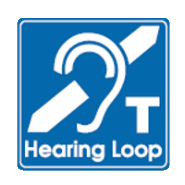
Induction loop technology is common in Europe and the U.K. and is universally accepted as the international standard for hearing access. Installed base is growing rapidly in the United States as organizations such as HLAA (Hearing Loss Association of America) and others press venues to become compliant with the ADA (Americans with Disabilities Act).
Typically, induction loop systems can be found in:
- Places of Worship
- Concert Halls
- Theaters
- Universities
- Government Offices
- Banks
- Ticket Kiosks
- Post Offices
- Airports
- Museums
Hearing Loop Demonstrations
The following two animated hearing loop animations and explanations are provided with thanks to www.hearingloop.org — an excellent resource for more information on this technology.
T-Coil Support in BeHear ACCESS
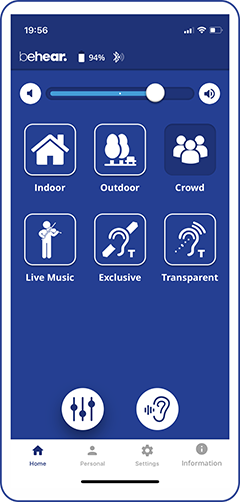
BeHear ACCESS T-coils can be activated wherever a loop system is installed. The wearer simply chooses either the T-Coil Exclusive or T-Coil Transparent mode (from the W&H BeHear app Home page, or by scrolling through the Hearing presets using the middle button on the right-hand control box). Exclusive mode allows only the direct signal from the T-Coil transmission to reach the wearer’s ears, while Transparent mode allows nearby important sounds (such as a companion’s voice) to be heard as well.
Each BeHear ACCESS headset incorporates two T-Coils that are perpendicular to each other, thus greatly decreasing sensitivity to the wearer’s orientation in the magnetic field of an Induction Loop System.
